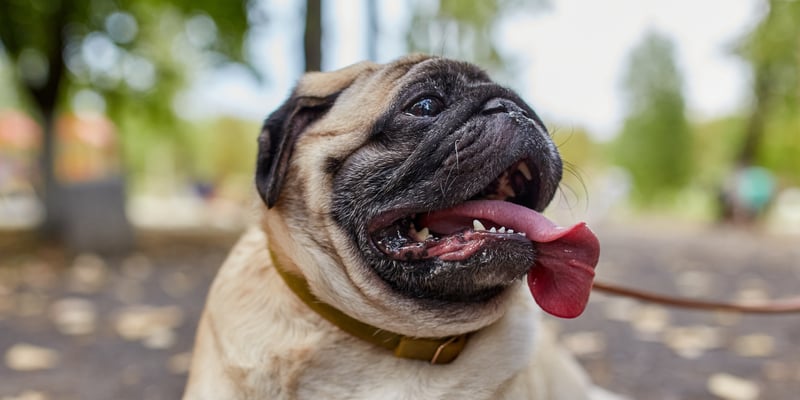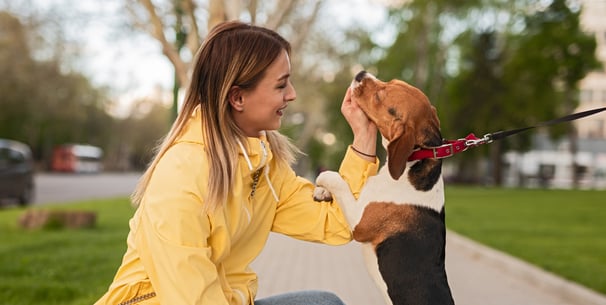Pug Dog Breed History: What Were Pugs Bred For? Where Did Pugs Originate?
Index:



Introduction
Your Pug’s comic snorts and soulful eyes melt hearts, but behind your pet’s adorable wrinkled face hides a colourful past.
Learning the story behind this cherished dog breed shows why good care, smart breeding and the right insurance keep those tiny tails wagging.
Ready to discover how an ancient breed became your sofa-sidekick? Let’s jump into 2,000 years of royal palaces, secret orders and lap-warming glory.
Key takeaways
This small dog breed has origins which trace to Ancient China over 2,000 years ago.
They were treasured companion pets for Chinese emperors.
Dutch traders brought them to Europe in the 16th century, where the House of Orange made them fashion icons.
King Charles II and Queen Victoria boosted the Pug breed craze in Britain.
Facial folds and short muzzles define the breed standard—and demand extra health checks.



From palace paws to lap dogs: Origins in Ancient China
Archaeologists date early Pugs to around 400 B.C., when silk-robed nobility prized a companion dog small enough to sit inside flowing sleeves.
Scrolls show emperors stroking tiny canines whose nasal folds supposedly resembled the Chinese character for “prince”.
These pampered pups slept in guarded quarters, wore jade collars and even had their own servants—talk about royal treatment.
Buddhist monasteries also adored “lion dogs” for their calm spirit. Monks believed the deep forehead furrow formed a cosmic path to enlightenment; we just think it looks like a constant puzzled smile.
Either way, breeding focused on gentle temperament, not hunting prowess, setting the template for Pugs being bred as companion animals.
Silk Road stowaways
By the late Ming dynasty, explorers from Portugal and Holland spotted these irresistible lap dogs and shipped a few home.
Records note that when the little travellers arrived in Europe, people gasped at their flat faces and corkscrew tails.



A royal European takeover
The silent hero and the Order of the Pug
Legend says a Pug named Pompey saved Prince William of Orange by alerting him to assassins.
Grateful nobles adopted the breed as their symbol, forming the secretive “Order of the Pug” (yes, members actually wore a dog collar during rituals—history can be hilarious).
Courts, queens and crowns
When William III and Mary II sailed to England in 1688, they brought Pugs with them, instantly sparking high-society buzz.
In later monarchies, King Charles II preferred King Charles Spaniels, yet still kept a few curly-tailed Pugs trotting behind his robes.
Fast-forward to 19th-century Britain, and Queen Victoria fell utterly in love, breeding dozens and lobbying for canine welfare.
Thanks to her, many Pugs became popular household pets rather than exclusive status symbols.



What were Pugs bred for? Understanding their life’s work
Simply put, Pugs were bred to be professional snugglers. Their job description has always been “warm the lap, charm the guests”.
Because Pugs were originally bred for people-focused life, they follow you from sofa to kettle as though being your shadow earns a salary.
Why a Pug makes the perfect lounge buddy
The round body fits neatly in the “elbow crook” position.
A short coat means minimal mud after British showers (unlike your friend’s Spaniel).
An expressive muzzle helps them “talk back” when you forget treat time.
Low prey drive, so your hamster is probably safe.
Sturdy enough for children’s gentle pats—though supervision is key.
Need extra help teaching manners? Check out our training tips if your little shadow tries leading every walk.
Small-but-mighty lap breeds at a glance



Shaping the breed we know today
Selective breeders in Victorian Britain refined coat colours, producing today’s iconic fawn Pugs with ebony masks alongside glossy black Pugs.
In 1885, the American Kennel Club officially listed the “Pug”, standardising weight, head shape and that trademark double curl tail.
Across the pond, early fanciers formed the Pug Dog Club of America to share best practices and protect genetics.
Their work—along with breed clubs worldwide—ensures modern show judges still seek the playful, square-set silhouette drawn in 19th-century ledgers.



Health note: Loving a flat-faced friend
Those adorable snorts? They’re also the reason vets label Pugs a brachycephalic breed.
Short skulls compress airways, so hot weather or boisterous exercise can trigger breathing distress. We recommend:
Strolls at cool times, harness over collar.
Weight control—extra kilos magnify airway pressure.
Regular vet checks
Insurance that covers specialist care (more on that shortly).



Bringing a little Pug home
Whether adopting an elder Pug or sourcing a puppy, work with a trusted breeder who screens parents for nostril width and spine health.
Socialise early—Pugs can also excel at low-impact dog sports like rally obedience. Yes, they’d rather nap, but a dash of training keeps joints limber and minds bright.
If you’re eyeing other fluffy pocket rockets, our in-depth Pomeranian breed guide is a great next read as well as our guide to toy dog breeds.



Why history still matters today
Understanding Pug history reminds us that these dogs were never meant to chase sheep or guard barns. They’re sofa specialists who measure success in hours spent next to you.
So the next time your little Pug snuggles under the duvet, remember you’re sharing a habit honed by Chinese emperors, celebrated by monarchs and protected by centuries of canine enthusiasts.
Ready to protect your royal lap dog?
Your pet’s heritage is priceless, but vet bills aren’t. Join thousands of owners who trust Waggel’s flexible cover to keep palace-worthy care within reach.
Get a quick quote for Waggel Pet Insurance today and give your Pug the happily-ever-after their ancestors would bark for.
Waggel Pet Insurance
Need more help? You're in luck if you're a Waggel Pet Insurance member. Along with our excellent coverage, we offer access to a 24/7 online vet to answer all your sticky questions, especially if you need grooming assistance.
Not a member? Why not get a quote now and cover your furry friend for a range of illnesses, all while enjoying our amazing perks and rewards.
Want more like this?
Get updates from us with helpful info, advice, answers to frequently asked questions and much more.
Index:
Related posts:
Get your quote
Along with our excellent coverage, we offer access to a 24/7 online vet to answer all your sticky questions.





